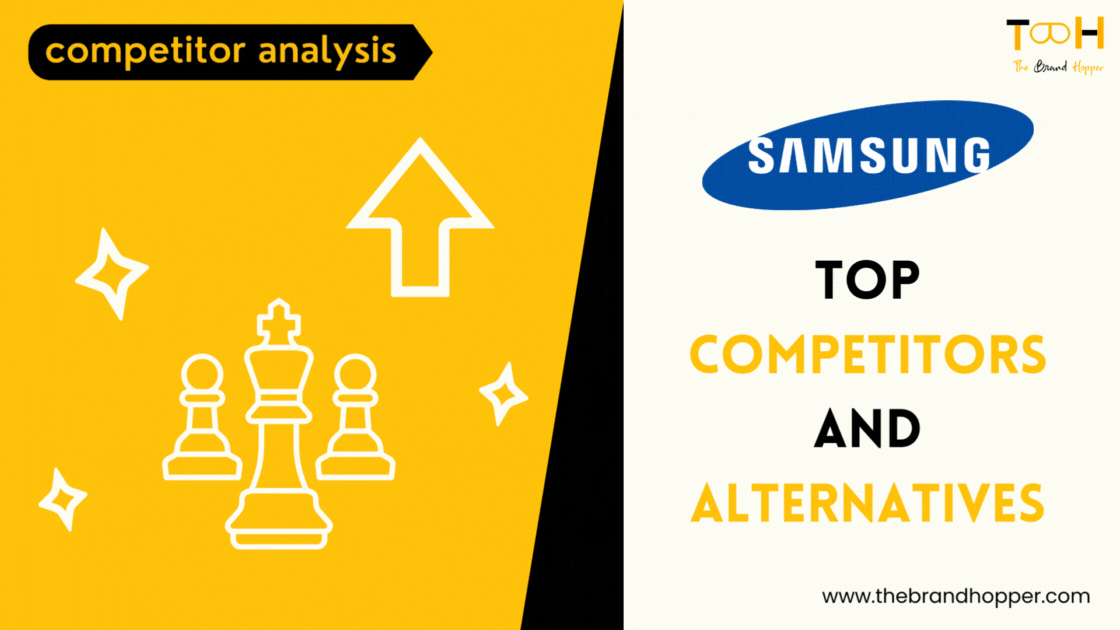Oracle Corporation is an American multinational technology company headquartered in Redwood City, California. The company specializes in developing and marketing enterprise software solutions, particularly database management systems, cloud infrastructure, and business software.
Oracle was founded in 1977 by Larry Ellison, Bob Miner, and Ed Oates. Originally, the company focused on developing a relational database management system (RDBMS) called Oracle Database, which is now one of the most widely used database systems in the world. Over time, the company expanded its product offerings to include a range of enterprise software solutions for various industries, including finance, manufacturing, healthcare, and more.
Oracle has grown through a combination of internal development and acquisitions of other technology companies. Notable acquisitions include PeopleSoft, Siebel Systems, and Sun Microsystems. Today, Oracle is a global corporation with over 138,000 employees and operations in more than 175 countries.
In recent years, Oracle has shifted its focus to cloud computing, offering cloud-based versions of its enterprise software solutions. The company also provides cloud infrastructure services, including storage, computing, and networking, through its Oracle Cloud Infrastructure (OCI) platform.
Oracle is considered a leading provider of enterprise software solutions and is a major player in the technology industry. Its products and services are used by businesses of all sizes and across a range of industries to manage and analyze their data, streamline operations, and improve decision-making processes.
Founding History of Oracle Corporation
Oracle Corporation was founded in 1977 by Larry Ellison, Bob Miner, and Ed Oates. The three men had worked together at a technology consulting firm called Ampex Corporation, where they had developed a database management system (DBMS) for the CIA called “Oracle.”

Inspired by the success of the Oracle DBMS, the three men decided to start their own company to commercialize the technology. They called their company “Software Development Laboratories” (SDL) and initially focused on developing custom software solutions for businesses.
In 1979, SDL released the first version of the Oracle DBMS, which was designed to be more efficient and user-friendly than existing DBMSs. The software quickly gained popularity, and SDL changed its name to “Relational Software, Inc.” (RSI) in 1982.
In 1983, RSI released Oracle Database 3, which was a significant improvement over previous versions. It featured enhanced security, improved performance, and the ability to store and manage larger amounts of data. The software was a major success and helped establish Oracle as a leading provider of database management systems.
In 1984, RSI changed its name to “Oracle Corporation” to better reflect its focus on database technology. The company went public later that year, raising $31 million in its initial public offering (IPO).
Throughout the 1980s and 1990s, Oracle continued to innovate and expand its product offerings. In addition to the Oracle Database, the company developed a range of enterprise software solutions for various industries, including finance, manufacturing, healthcare, and more.
In the early 2000s, Oracle shifted its focus to acquisitions, purchasing a number of companies to expand its product portfolio and market reach. Notable acquisitions include PeopleSoft, Siebel Systems, and Sun Microsystems.
Today, Oracle is a global corporation with over 138,000 employees and operations in more than 175 countries. The company continues to innovate and develop new technologies, with a focus on cloud computing, artificial intelligence, and machine learning. Oracle is considered a leader in the enterprise software industry and a major player in the technology industry as a whole.
How does Oracle Corporation Makes Money? / Business Model of Oracle
Oracle Corporation makes money primarily by selling software licenses and subscriptions, as well as providing cloud services, hardware systems, and consulting services to businesses.
Software Licenses and Subscriptions: Oracle is known for its flagship product, the Oracle Database, which is a relational database management system (RDBMS). The company generates significant revenue by selling licenses and subscriptions to its database software, as well as other enterprise software solutions, such as enterprise resource planning (ERP), customer relationship management (CRM), and human capital management (HCM) systems.
Cloud Services: Oracle has been expanding its cloud computing offerings, including its Infrastructure-as-a-Service (IaaS), Platform-as-a-Service (PaaS), and Software-as-a-Service (SaaS) products. The company offers cloud-based versions of its enterprise software solutions, as well as a range of other cloud services, such as data storage, computing, and networking.
Hardware Systems: Oracle also sells hardware systems, including servers and storage devices, which are designed to work seamlessly with its software solutions. The company’s hardware products are primarily targeted at businesses with high-performance computing needs, such as data-intensive industries like finance, healthcare, and manufacturing.
Consulting Services: Oracle offers consulting services to businesses looking to implement its software solutions or migrate to the cloud. These services can include project planning, system design and implementation, training, and ongoing support.
In addition to these core revenue streams, Oracle also generates revenue from other sources, such as support and maintenance contracts, training and certification programs, and advertising through its online properties.
Overall, Oracle’s business model is focused on providing businesses with a comprehensive suite of software and services to help them manage and analyze their data, streamline operations, and improve decision-making processes. The company’s broad portfolio of products and services, combined with its strong brand and reputation, has helped make it a major player in the enterprise software and cloud computing industries.
Marketing Strategies of Oracle Corporation
Oracle Corporation has a diverse range of marketing strategies aimed at promoting its products and services to potential customers. Some of its key marketing strategies include:
Content Marketing: Oracle regularly publishes blog posts, white papers, and case studies on its website and through various social media channels. This content is designed to educate potential customers on the benefits of Oracle’s products and services, and to demonstrate the company’s thought leadership in the industry.
Event Marketing: Oracle regularly hosts or sponsors industry events, conferences, and trade shows to promote its products and services. These events provide opportunities for Oracle to showcase its latest technology and innovations, and to network with potential customers and partners.
Digital Advertising: Oracle invests heavily in digital advertising, using various channels such as social media, display advertising, and search engine marketing. This allows the company to target specific audiences and to track the performance of its advertising campaigns in real-time.
Influencer Marketing: Oracle partners with industry influencers and thought leaders to promote its products and services. These partnerships can take the form of guest blog posts, social media collaborations, or speaking engagements at events.
Sales Enablement: Oracle provides its sales teams with the resources and training they need to effectively promote its products and services. This includes sales collateral such as brochures and presentations, as well as training programs on the company’s products and competitive landscape.
Partner Marketing: Oracle has a large network of partners that resell or integrate its products and services. The company works closely with these partners to develop joint marketing campaigns and co-branded materials.
Thought Leadership: Oracle invests in thought leadership programs, such as research studies, to position itself as an expert in the industry. This helps to build trust with potential customers and to establish the company as a leader in the market.
Overall, Oracle’s marketing strategies are focused on promoting its products and services to potential customers, building thought leadership and trust, and supporting its sales teams and partners. The company uses a range of tactics and channels to reach its target audiences and to track the performance of its marketing efforts in real-time.
Growth and Revenue of Oracle Corporation
Oracle Corporation has experienced significant growth since its inception in 1977. Today, it is a global leader in enterprise software and cloud computing, with operations in more than 175 countries.
Revenue Growth: Oracle’s revenue has grown steadily over the years, driven primarily by its software licenses and cloud services. In 2021, the company reported total revenues of $40.5 billion, up from $39.1 billion in 2020. This represents a year-over-year growth rate of 3.6%.
Cloud Revenue: Oracle has been focusing on growing its cloud business in recent years, with a particular emphasis on its Software-as-a-Service (SaaS) and Platform-as-a-Service (PaaS) offerings. In 2021, the company reported cloud services and license support revenues of $28.7 billion, up from $26.7 billion in 2020, representing a year-over-year growth rate of 7.3%.
Hardware Revenue: Oracle also generates revenue from its hardware business, which includes servers and storage devices designed to work with its software solutions. In 2021, the company reported hardware revenue of $1.8 billion, up from $1.5 billion in 2020, representing a year-over-year growth rate of 19.5%.
Net Income: Oracle has consistently reported strong net income over the years, driven by its high-margin software and cloud services businesses. In 2021, the company reported net income of $10.1 billion, up from $10 billion in 2020, representing a year-over-year growth rate of 0.9%.
Geographic Segments: Oracle generates revenue from customers around the world, with a particular emphasis on the United States and the EMEA (Europe, Middle East, and Africa) region. In 2021, the company reported revenue of $25.8 billion from the Americas region, $10.3 billion from the EMEA region, and $4.4 billion from the Asia Pacific region.
Overall, Oracle’s growth and revenue have been driven by its strong portfolio of enterprise software and cloud computing solutions, as well as its focus on innovation and strategic acquisitions. While the company faces competition from other major players in the industry, such as Microsoft and Amazon Web Services, it continues to be a major player in the enterprise software and cloud computing markets.
Competitors of Oracle Corporation
Oracle Corporation operates in a highly competitive market, facing competition from both established players and newer, disruptive startups. Some of its key competitors include:
Microsoft Corporation: Microsoft is one of the largest and most established players in the enterprise software market. It competes with Oracle in areas such as database management systems, ERP systems, and cloud computing.
Also Read: History of Microsoft – World’s Most Successful Technology Company
Amazon Web Services (AWS): AWS is the market leader in cloud computing, providing a range of services such as data storage, computing, and networking. It competes with Oracle’s cloud offerings, particularly in the areas of IaaS and PaaS.
SAP SE: SAP is a major player in the enterprise software market, offering ERP systems, CRM systems, and other software solutions. It competes with Oracle in areas such as database management systems and cloud computing.
IBM Corporation: IBM offers a range of enterprise software solutions, including database management systems, ERP systems, and analytics software. It also competes with Oracle in the areas of cloud computing and consulting services.
Also Read: IBM – The History And The Successful Run
Salesforce.com, Inc.: Salesforce is a leading provider of cloud-based CRM solutions, competing with Oracle in this area. It also offers other software solutions, such as marketing automation and customer service software.
Workday, Inc.: Workday is a newer player in the enterprise software market, offering cloud-based ERP and HCM systems. It competes with Oracle in these areas, particularly in the areas of cloud-based HCM systems.
Google LLC: Google offers a range of cloud computing services, including data storage and computing. It competes with Oracle in the areas of IaaS and PaaS.
In addition to these major competitors, Oracle also faces competition from smaller, disruptive startups that are focused on specific areas of the enterprise software market, such as analytics, cybersecurity, or artificial intelligence.
Overall, Oracle faces intense competition in the enterprise software and cloud computing markets. While it has a strong brand and reputation, it must continue to innovate and adapt to stay competitive in a rapidly changing industry.
Concluding..
In conclusion, Oracle Corporation is a technology giant with a long history of innovation and growth. From its founding in 1977 as a database software company, Oracle has expanded its product offerings to include a wide range of enterprise software and cloud computing solutions. Despite facing intense competition from established players and disruptive startups, Oracle has continued to grow and evolve its business over the years, with a focus on innovation, customer service, and strategic acquisitions.
Today, Oracle is a leader in the enterprise software and cloud computing markets, with a strong brand and reputation for quality and innovation.
As the industry continues to evolve, Oracle will need to continue to adapt and innovate to stay ahead of the competition, but its strong financial position and commitment to customer service and innovation position it well for continued success in the years to come.
To read more content like this, subscribe to our newsletter



